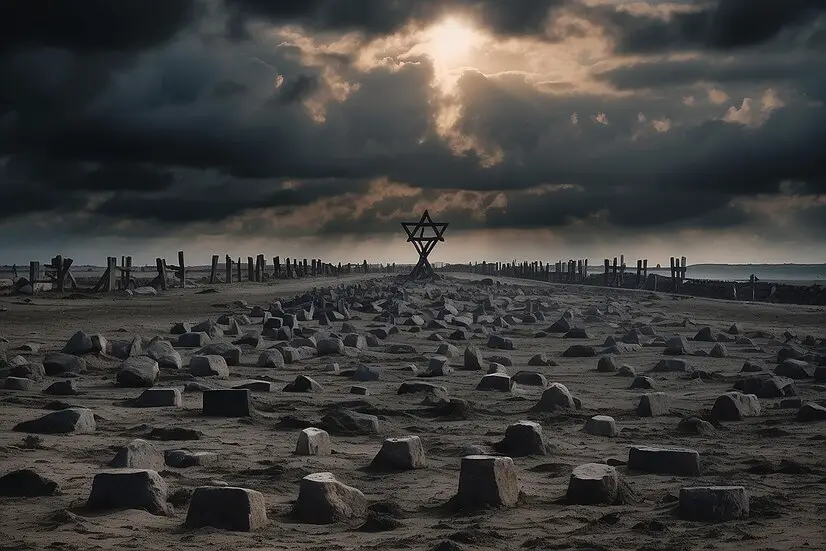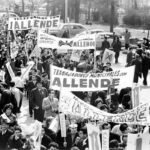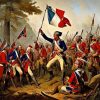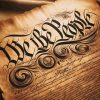The Holocaust stands as one of the darkest chapters in human history, providing evidence for unchecked hatred and bigotry that had devastating results for millions. World War II saw the Nazi regime orchestrate genocide that resulted in the systematic persecution and murder of approximately six million Jews—two-thirds of Europe’s Jewish population – including 1.5 million children, making an atrocious atrocity even more shocking. Adolf Hitler and Heinrich Himmler played critical roles in carrying out Hitler’s plan of genocide by carrying out the “Final Solution,” or an order intended to eradicate Jews from existence.
Holocaust perpetrators also targeted millions of other groups deemed undesirable under Nazi ideology, including Romani people, disabled individuals, political dissidents, and more. Remembrance of these atrocities should serve not simply to honor their memory but as an essential step toward ensuring such horrors never repeat themselves in the future.
Although many individuals use an umbrella term (i.e., “flash flood” to describe heavy downpours),
Historical Context
The Holocaust had its genesis in the turbulent aftermath of World War I and subsequent interwar years across Europe. The Treaty of Versailles, signed in 1919, imposed severe economic hardship upon Germany through reparations payments that created widespread national humiliation. Many Germans perceived this lopsided peace agreement as betrayal, creating fertile ground for extremist nationalist movements to arise and flourish.
At that time, Germany’s inaugural attempt at democracy, the Weimar Republic, struggled with political instability, economic crises, and social upheaval. Hyperinflation and the Great Depression further disillusioned its population while undermining trust in democratic institutions. Adolf Hitler took advantage of these discontentments with promises of restoring German pride while undoing Versailles Treaty policies to lift Germany from economic woes – both promises made through National Socialist (Nazi) Party rhetoric.
Hitler’s rhetoric, which combined passionate nationalism and anti-Semitism, resonated among a populace searching for answers to its sorrows. Their rise saw the systematic erosion of democratic norms and the establishment of totalitarianism, which eventually resulted in radical racial policies leading to the Holocaust.
A Brief Overview Of The Holocaust
The Holocaust (Shoah in Hebrew) was an organised campaign of persecution and extermination carried out by Nazi Germany and its allies from 1933 until World War II ended in 1945, targeting European Jewry specifically; killing six million of its population; including one million children. Millions from various ethnic, cultural, and political backgrounds, such as Romani people, disabled individuals, Soviet prisoners of war, Polish civilians, and political dissidents, all perished due to this eventful period in European history.
Main Events and Timeline
The timeline of the Holocaust illustrates its gradual spread since Hitler’s rise to power in 1933, when the Enabling Act granted dictatorial powers and established concentration camps. Key events include:
- 1933: With Hitler taking power comes The Enabling Act, and the first concentration camps are formed (1934): Concentration Camps established
- 1935: The Nuremberg Laws institutionalize discrimination against Jews. Its 1938 Kristallnacht, or “the Night of Broken Glass,” marked an outbreak in anti-Jewish policy.
- 1941: Implementation of The Final Solution begins, including mass deportations to extermination camps.
- 1945: American troops liberate concentration camps from Nazi aggression, unveiling their horror.
Holocaust Victims
Jewish Communities Were at the Core of the Holocaust: Jewish communities across Europe suffered gravely at the hands of Nazi anti-Semitic ideology during World War II when Nazi authorities attempted to eradicate any sign of Judaism within Europe – this caused family fracture and whole communities to vanish entirely; their attempted extermination caused untold deaths as well as lasting cultural and historical consequences that are felt today.
Other Groups Affected
Though Jews were its primary victims, the Holocaust also devastated other groups. Romani people suffered atrocities similar to that experienced by Jews; hundreds of thousands of Romanis were slaughtered; people with disabilities fell prey to programs like T4 Euthanasia, which sought to kill those deemed “unfit.” Homosexuals, Jehovah’s Witnesses, Soviet prisoners, and political dissidents all witnessed persecution or death at its hands.
Life inside concentration camps was often harsh
Acts of Resistance: Concentration camps like Auschwitz, Sobibor, and Treblinka were symbolic of Holocaust atrocity. Prisoners lived under inhumane living conditions characterized by forced labor, starvation, and mass executions – daily survival became an ongoing fight characterized by immense pain and cruelty.
Personal Stories and Testimonies
Holocaust survivors’ accounts offer us an intimate view into this immense tragedy, from life in concentration camps, struggles they encountered therein, and grievous losses; their accounts shed light upon its long-term ramifications on individual lives. But resistance was possible. Resilience prevailed – proof can be found through survivors.
Resistance and Resilience
Acts of Resistance: Resistance Even under challenging conditions, several acts of resistance were carried out during the Holocaust. From violent uprisings like the Warsaw Ghetto Uprisings to clandestine efforts at documentation and dissemination, resistance came in all shapes and forms: spiritual preservation efforts such as cultural heritage preservation food smuggling, or supporting escape attempts were some forms that people took advantage of to fight back during that dark era.
Stories of Survival and Resilience
Holocaust survivor stories serve as powerful testaments of human resilience. Although postwar survivors faced unique difficulties, their determination remains inspiring, not only as reminders of what we lost but as proof that humanity remains resilient despite overwhelming odds.
Liberation: Aftermath of Liberation
End of World War II and Liberation of Camps
World War II finally ended on May 1945 in Europe, signaling an end to Nazi atrocities carried out at concentration camps controlled by France or their allies, such as Sweden. Over time, concentration camps were gradually liberated while survivors endured malnourishment and disease before rebuilding lives irrevocably altered during warfare.
Nuremberg Trials and Justice
From 1945-1946, the Nuremberg Trials brought senior Nazi officials to justice for war crimes and crimes against humanity committed during World War II – creating precedents and setting an essential foundation of modern international criminal law. Furthermore, these trials exposed the enormity of Holocaust atrocities, thus reminding future generations about unchecked power and prejudice – marking it with commemorative ceremonies across Europe today.
Commemorating the Holocaust
Memorials and Museums Honoring the Holocaust
Holocaust memorials and museums serve as powerful reminders of an appalling chapter in human history, serving both victims’ memories while providing essential education about hatred and intolerance to younger generations. Sites such as the United States Holocaust Memorial Museum in Washington D.C. and Yad Vashem in Jerusalem serve as valuable educational opportunities.
Holocaust Remembrance Has Included Education
Learning about the Holocaust provides individuals insight into its effects as they see how prejudice, racism, and stereotyping affected societies at that time. Education ensures the lessons of the Holocaust don’t get forgotten while building bridges toward creating more equitable and just societies throughout the globe. Ongoing Remembrance for Atrocities | Sustainable Societies for Tomorrow This essay offers insight into Holocaust Remembrance activities through education as an avenue towards the prevention of atrocities worldwide.
Conclusion
Rethinking Lessons of the Holocaust
Although the Holocaust tragedy was unfathomable, its lessons remain highly relevant today. They remind us how unchecked hatred threatens all of us while reminding us against bigotry and injustice – remembering its lessons can both honor those who suffered and died while also serving to ensure similar events do not reoccur in future years.
Memories and Education in Shaping a Better Future
Recognising and understanding the Holocaust draws us together to prevent such atrocities from occurring again, inspiring us to uphold human dignity and respect for all people. Through memory and education, we hope horrors such as the Holocaust never happen again in the future.












[…] systematic genocide of six million Jews during their occupation by Nazi Germany, known as The Holocaust. This horrendous episode in history showcased racism, anti-Semitism, and totalitarianism as it […]